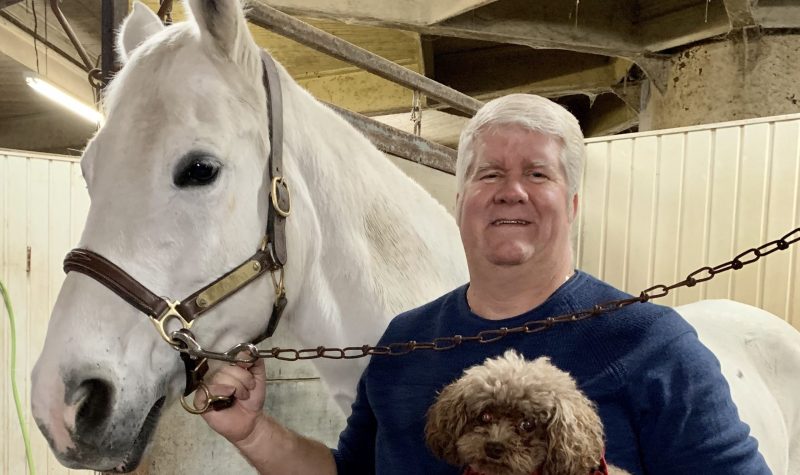The Bromont Olympic Equestrian Park officially changed hands in spring 2022 after a group of Bromont citizens came together to purchase the site.
Dating back to the 1976 Montreal Olympics, the park hosts renowned events, such as the Bromont International, that welcome some of the equestrian world’s top athletes. The site also provides riding opportunities for up-and-coming riders and people that are interested in the sport.
Founded and developed by local community members, the group of partners saw an opportunity to upgrade and modernize the site’s facilities to create a space that everyone can enjoy and discover more about the sport.
Certain infrastructure projects have already been completed, including the resurfacing of a riding ring, and there are other plans in the works. The new owners are also looking for volunteers to help take the Bromont Olympic Equestrian Park in a new direction.
“A group of us who actually have horses, who ride locally, I ride quite often in the park itself, and live around the park wanted to ensure that the site remained the same type of vocation and something that would not be developed for condos or houses,” explained Derek Head, one of the new owners of the park.
After purchasing the site last year, the partners created a list of priorities for their future projects. Over the summer, they conquered their first major project which involved resurfacing one of the riding rings to bring it up to code.
“There’s some infrastructure issues that had to be addressed and that will need to be addressed in the future. (…) It was close to several hundred thousands of dollars just to change the surface in one of the rings so that it met the criteria set by the FEI (Fédération Equestre Internationale),” noted Head. “It’s an international federation that dictates what type of conditions sites have to be in to hold events. The reason why they have these strict guidelines is to protect the horses.”
The second project involved upgrading the site’s temporary stalls.
“They are semi-permanent that are there for when the visiting horses arrive. They all need to be updated so we are doing a certain portion this year and another portion the following year,” Head highlighted. “(…) It adds up quite quickly. On top of that, there’s also the large building structure where the judge’s tower is and where there’s a terrace for people to sit at during the events. We’re going to have to redo most of that building.”
The partners are looking at various architectural designs for the building, said Head.
“We’re looking at whether we’d incorporate maybe a restaurant in there. These are all things that are being looked at at this time. The biggest, most interesting, launch, which is what we are really studying now for long term, is we would like to have a covered arena that is in harmony with the environment,” he mentioned. “Something large, made out of wood, and possibly having a multi-use, not just for horses.”
Head described the potential arena as a “rooftop structure without walls” that can be used in the summer for events during poor weather conditions.
“There’s the possibility, in the winter, of using it for municipal activities, possibly skating or other things. We’re looking at that with all levels of the government because we want them to be involved since it’s something for the municipality,” said Head.
Head mentioned that he and his partners felt like there was a “wall between the community and the equestrian community.”
“Unfortunately, a lot of people have the opinion that the equestrian activities is more of an elite sport and we want to say no, it isn’t that. This is open to the community, come by and see what it is, there’s an opportunity to ride and get close to the horses and the people. It’s a very inexpensive activity to enjoy and go and see. For most of our events there’s no charge for people to visit,” noted Head.
From May up to September, the Bromont Olympic Equestrian Park hosts a variety of equestrian events, including horse jumping, horse carriage competitions, and the cross-country event.
“The third one, which is one of the, if not the, biggest, equestrian jumping in Canada, (…) is called the Bromont International. We have about 700 horses there for that competition from all around the world. Many of the participants are the top jumpers in the world,” mentioned Head.
In order for these competitions to take place, Head said that volunteers are “crucial.”
“Even though we bring in many qualified people to be judges, scorekeepers, and people that drive the tractors after each competition (…), there’s a lot of volunteers involved. It could be something as simple as taking notes while sitting beside one of the judges or up in the tower, bringing scores from the judges to another room that calculates them, there’s just all sort of activities,” he explained. “I would say at most events, depending on the size, but let’s say the number volunteers required varies between 20 and 50 people.”
Despite attracting top athletes from all over the world, Head emphasized that the new owners want to make the park better known within the local community.
“We want to make it more well known. I personally found that not enough people locally know about it or think it’s accessible,” he told CIDI.
A new website is currently being build for the Bromont Olympic Equestrian Park. Until then, more information about the park and upcoming events can be found here.
More information on the history of the park can be found here.
Listen to the CIDI story below:


